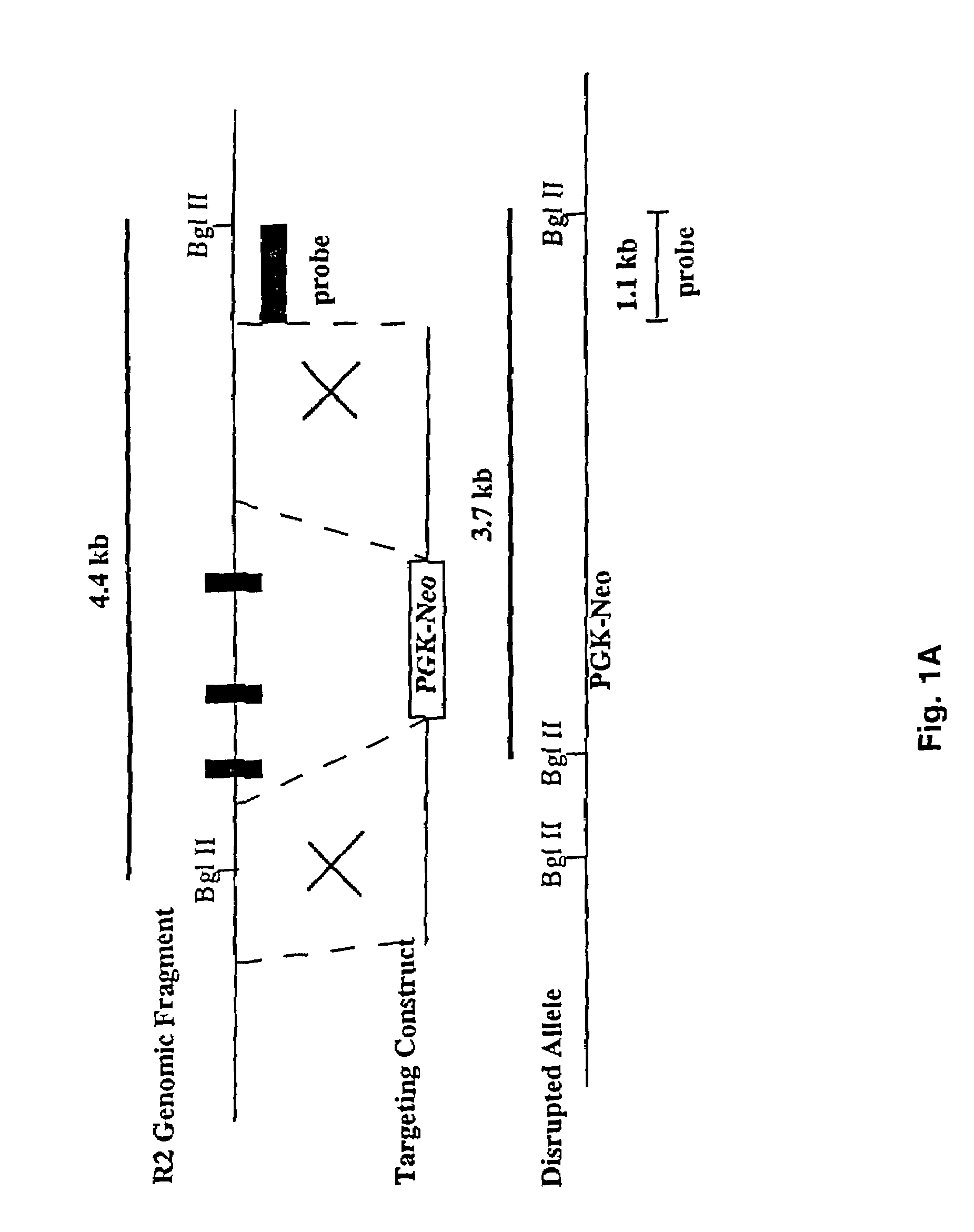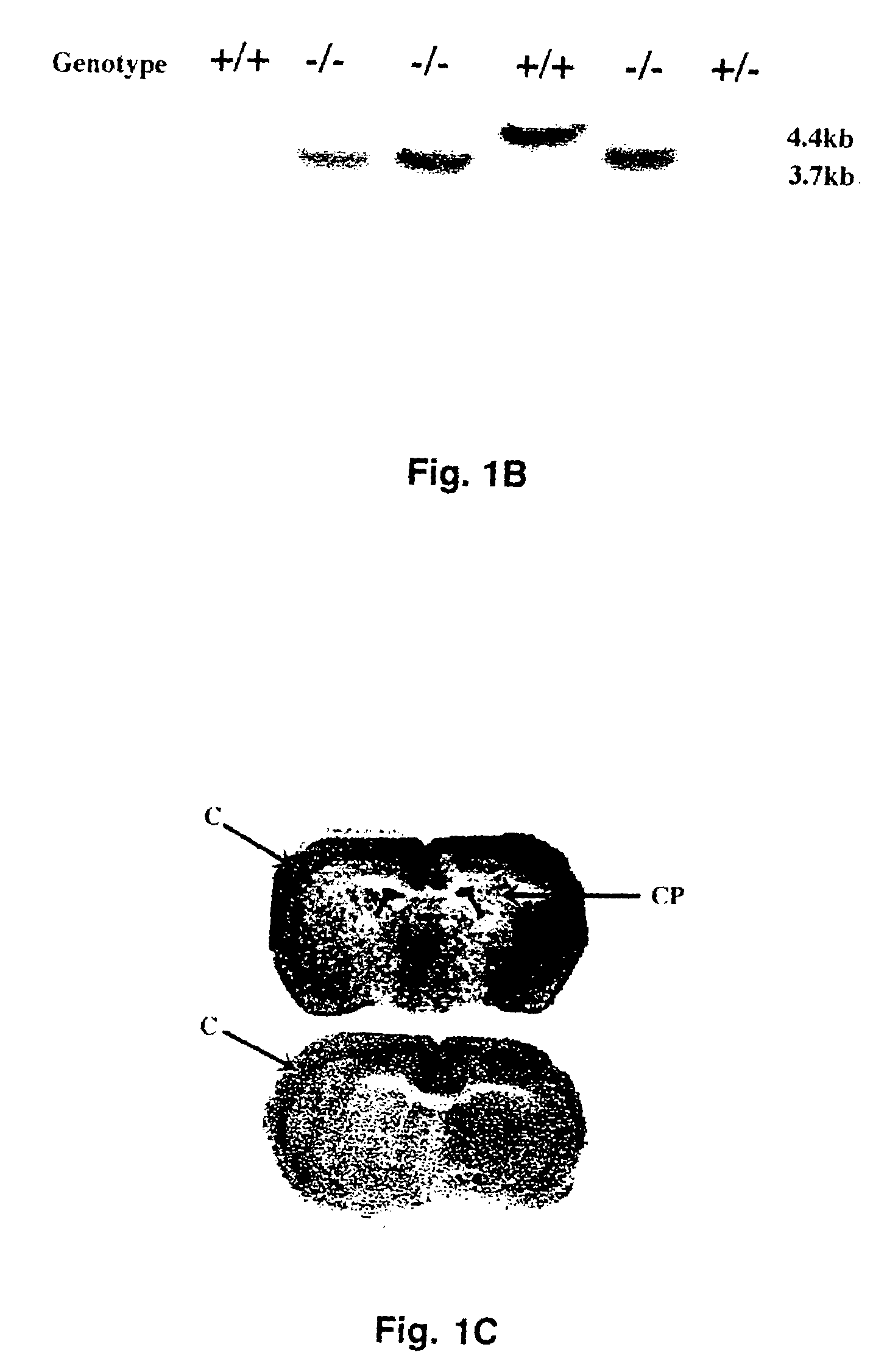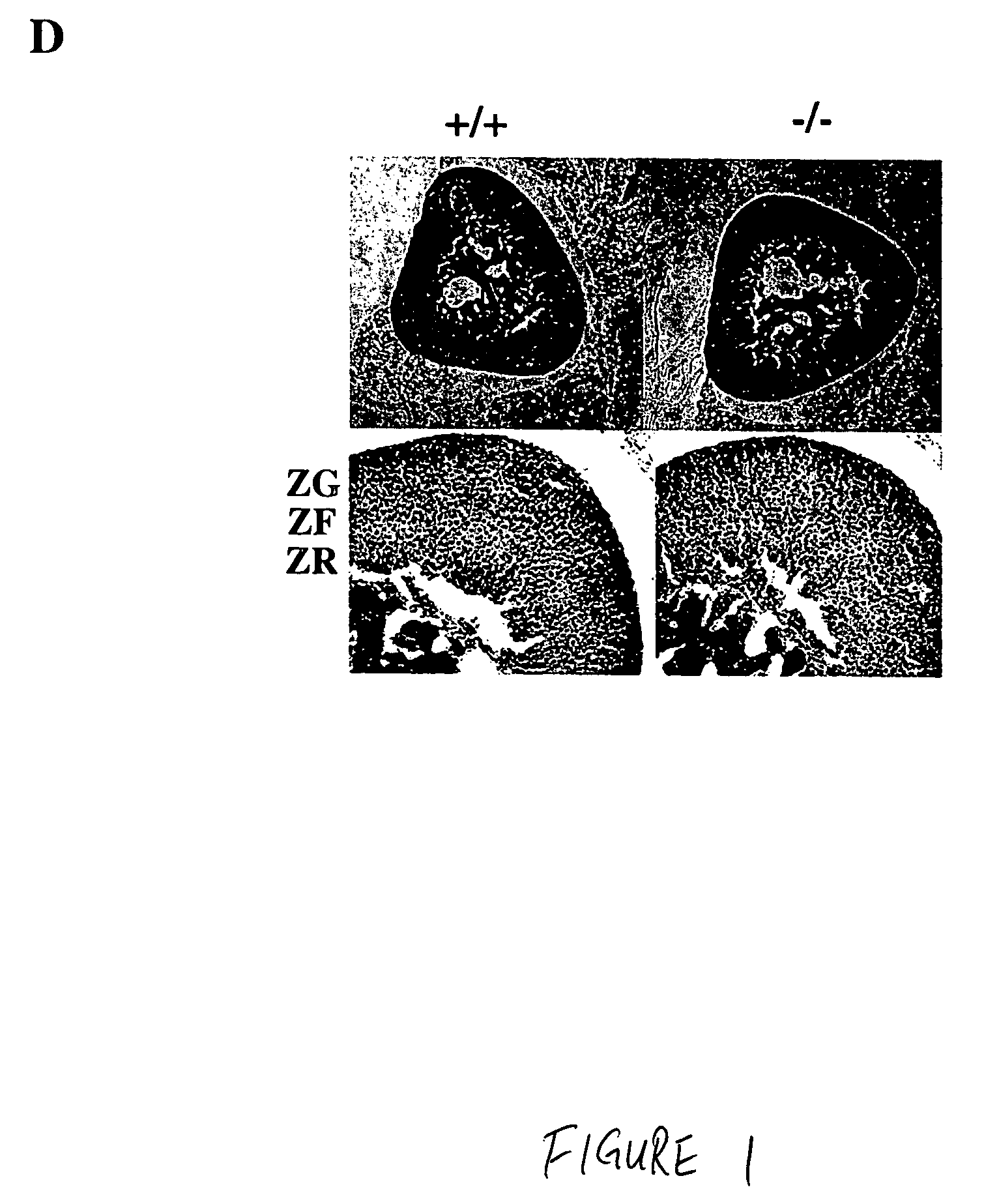Method of inhibiting angiogenesis by administration of a corticotropin releasing factor receptor 2 agonist
a corticotropin and receptor 2 technology, applied in the field of neurology, endocrinology, psychiatry, can solve the problems of little elucidation regarding the physiological function of crfr2, prior art deficient in lack of mice deficient, and not available crfr2 specific antagonists, etc., to achieve rapid hpa response, reduce appetite, and alter the anxiety state of animals
- Summary
- Abstract
- Description
- Claims
- Application Information
AI Technical Summary
Benefits of technology
Problems solved by technology
Method used
Image
Examples
example 1
Generation of the CRFR2 Deficient Mice
[0090]For the construction of CRFR2 null mutant mice, a genomic clone DNA containing the CRFR2 locus was isolated from a mouse strain 129 genomic DNA library. From this clone, a targeting vector was constructed in which the exons 10, 11, and 12 of the CRFR2 gene encoding the beginning of the fifth transmembrane domain through the end of the seventh transmembrane domain were replaced with a neomycin resistance gene cassette (FIG. 1A). The resulting plasmid DNA was linearized with Not I and electroporated in to J1 embryonic stem (ES) cells as previously described (8). After selection in 0.2 mg / ml G418 (active form) for 7-9 days, neomycin resistant clones were individually selected and screened for the presence of the disrupted CRFR2 allele by Southern blot analysis.
[0091]Positive ES clones were injected into C57 BL / 6 blastocysts to generate chimeric mice. Chimeric males were crossed to C57BL / 6 females and germ-line transmission of the disrupted al...
example 2
Analysis of CRFR1 and CRFR2 Expression in CRFR2 Deficient Mice
[0092]To determine if the targeted deletion resulted in a null mutation of the CRFR2 gene, receptor autoradiography was performed on brain sections from wild type control and mutant animals.
[0093]Slides containing 20 μm sectioned brain tissue were thawed at room temperature and washed twice for 10 min. in 50 mM Tris buffer (pH 7.4) at room temperature. Sections were then incubated in buffer containing 50 mM Tris (pH 7.4), 125I-Sauvagine, 10 mM MgCl2, 0.1% BSA, and 0.05% bacitracin for 60 min. at room temperature. Nonspecific binding was defined in adjacent sections that were exposed to both 125I-Sauvagine and 1 μm cold sauvagine. After the incubation period, slides were washed in a 50 mM Tris buffer plus 0.01% Triton X-100 at 4 C twice for 5 min. each. Slides were rapidly dipped in deionized water, dried and apposed to film for 3 days.
[0094]In the mutant mice, no binding in brain regions specific to CRFR2 (lateral septum)...
example 3
Histological Analysis of CRFR2 Deficient Mice
[0095]To determine whether the development of the HPA axis was compromised in the CRFR2 deficient mice, the pituitary and adrenal glands of male mice 10-12 week of age were sectioned and stained with hematoxylin and eosin (H&E). Briefly, mice were perfused with 4% paraformaldehyde (PFA). Tissues were removed, postfixed overnight at 4 C, and cryoprotected in 30% sucrose in PBS. Tissues were sectioned at 12 μm thickness and stained with hematoxylin and eosin. The results showed no obvious differences in structure or cell types (FIGS. 1D-1E).
[0096]In addition, pituitary sections were stained with anti-ACTH antibodies. The pituitaries were sectioned, postfixed in 4% PFA for 5 min., rinsed in PBS, and stained with ACTH antibody as described previously (6). No qualitative differences were noted between wild type and mutant corticotropes (FIG. 1E).
PUM
 Login to View More
Login to View More Abstract
Description
Claims
Application Information
 Login to View More
Login to View More - R&D
- Intellectual Property
- Life Sciences
- Materials
- Tech Scout
- Unparalleled Data Quality
- Higher Quality Content
- 60% Fewer Hallucinations
Browse by: Latest US Patents, China's latest patents, Technical Efficacy Thesaurus, Application Domain, Technology Topic, Popular Technical Reports.
© 2025 PatSnap. All rights reserved.Legal|Privacy policy|Modern Slavery Act Transparency Statement|Sitemap|About US| Contact US: help@patsnap.com



